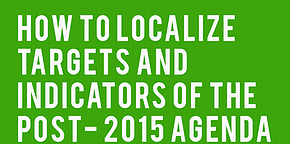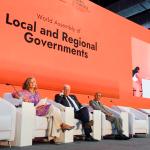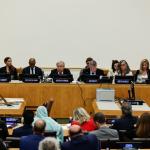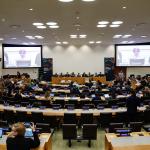With the UN Conference to approve the Post-2015 Agenda on the horizon, June saw the inaugural meeting of the Interagency and Expert Group (IAEG-SDG) charged with drawing up proposals for indicators to measure progress towards the 17 goals and 169 targets of the Agenda across the world.
The recently published official report of the meeting states that "each set of indicators serves a specific purpose, with national and sub-national indicators needed for more localized policy interventions”. This mention of the sub-national sphere is a positive signal from the point of view of local and regional governments.
Over the summer of 2014, the Global Taskforce co-led a consultation on “Localizing the Post-2015 Agenda” with UNDP and UN-Habitat. One of the main messages from the consultation was the need to monitor progress at local level to address urban and rural contexts and sub-national inequalities. In November 2014, the Global Taskforce of Local and Regional Governments presented its own technical report on how to localize the targets and indicators of the Post-2015 Agenda late last year.
The IAEG-SDG is working from a list of priority indicators drawn up on the basis of work by the UN Statistics Division and Member States. The meeting report describes the five priority indicators proposed for Goal 11 (make cities and human settlements inclusive, safe, resilient and sustainable) as “feasible and relevant”. However, the final implementation of target 11.1 on housing, basic services and slum upgrading will depend greatly on the definition given to ‘slums’ in the indicator. The report also calls for a review of target 11.5 on deaths and economic losses caused by disasters.
The definitions of ‘access to water’ and ‘access to energy, both relevant to local government competencies, have also been flagged up for further specification and amendment.
According to the report, several agencies’ in the meeting pointed out that having only one indicator per target for all targets would introduce “a severe limitation given the multidimensional nature of some targets”. This could be particularly relevant to Goal 11. They also stressed that the issue data disaggregation should be addressed in “a comprehensive and crosscutting manner”.
The question remains of whether the IAEG-SDG should focus on identifying the indicators with the most readily available data or those that best captures the essence of the target. This tension between the ideal and the possible will be hugely consequential to the fate of localization. Given that existing data that can be geographically disaggregated is extremely limited, the ability to track progress and target implementation at sub-national level will, in large part, depend on investment in new data collection capacity at local level.
The IAEG-SDG, made up of representatives from U.N. agencies, national statistical offices and political delegations, will refine the current draft list of indicators into roughly 100 benchmarks. The final set of indicators will be confirmed at the annual meeting of the U. N. Statistical Commission in March 2016.
More information on Localizing the Post-2015 Agenda
First proposed priority indicator list under consideration by the IAEG-SDG
Report of the first IAEG-SDGs meeting





